Transat Jacques Vabre: Imoca Record Setting
Published on November 17th, 2017
(November 17, 2017; Day 12) – Jean-Pierre Dick and Yann Eliès on St Michel – Virbac are predicted to complete a commanding victory in the Imoca class of the 13th edition of the Transat Jacques Vabre tomorrow (Saturday, November 18) at 21:00 UTC.
It would be a record-breaking victory for Dick, who would become the only person in the history of this bi-annual double-handed race, in any class, to have won four the race four times. Dick, the 52-year-old skipper from Nice, won the Imoca class in 2003, 2005 and 2011.
A 21:00 UTC finish in Salvador de Bahia tomorrow would also mean that Dick and Eliès will set a new record for the Transat Jacques Vabre to Salvador, with Dick beating his own record, of 13 days 09 hours 19 minutes and seconds set with Loïck Peyron on Virbac-Paprec in 2005.
Imoca: Uncomfortable cushions, lucky dice and the sounds of Salvador
ETAs
St Michel –Virbac, Saturday, November 18, 21:00 UTC
SMA – Sunday, November 19, 12:00
Des Voiles et Vous!, Sunday, November 19, 23:30
“When the sound of flying fish fades, we hear the samba schools in Salvador,” Pierre Lacaze, co-skipper of Vivo A Beira, said yesterday from the middle of a sticky Doldrums, 1,150 miles from the finish.
But it is Dick and Eliés that will surely hear the sounds of the berimbau* first. St Michel-Virbac is reaching at 17 knots in more easterly trade winds off the coast of Recife in north-east Brazil with 330 miles to Salvador. They still cannot shake the determined SMA, who were still 112 miles behind at 16:00 UTC and waiting for any slip.
As Eliès has repeatedly said, quarter-joking, “we have a cushion it’s just not that comfortable.” There will be no relaxing until the line is crossed – particularly after Ultime Prince de Bretagne’s dismasting on Wednesday just 93 miles from the finish. Dick called that: “the worst accident that could happen to a skipper far from home.”
The podium places look take but behind Des Voiles et Vous!, Three other Imoca finally emerged from the Doldrums last night and have started to accelerate again: Malizia II, Bastide Otio and Initiatives Cœur. They were positioned east and were the big winners. Generali and Bureau Vallée 2 were the big losers on the west. The tracker reveals 48 hours of derisory speeds of 5 knots and the tell-tall zig-zagging paths of bemused sailors down the centuries in this unknowable passage.
“Obviously we had a strategy and thought east was best, but some were unlucky,” Samantha Davies, skipper on Iniatives-Cœur, said “It the biggest changes and distances lost and gained in the fleet I’ve seen in the Doldrums. Generali and Bureau Vallée really didn’t deserve to get dealt those cards.
Many teams, with record race times being predicted in Le Havre, took two days of food out of their boats and left them on the pontoons, and some are cutting it fine now. “We took 14 days of food and it’s going to take us a day longer,” Davies said. “We took food out, but actually we haven’t eaten as much as our daily ration allows.”
*A musical Brazilian bow, used especially in the Bahia region to accompany capoeira.
Class40: East is best?
ETA
Leaders, Thursday November 23 or Friday November 24
Anglo-Spanish duo, Phil Sharp and Pablo Santurde on Imerys Clean Energy now have four French duos to contend with at the front of the Class40 fleet.
Teamwork40 is now firmly in the lead group – just 14 miles separate the four boats, with Région Normandie Junior Senior by Evernex only 46 miles behind on the same trajectory as Imerys Clean Energy on the west of the lead group. But the gaps have opened a little over the day with boats to the east, including new leader V&B prospering most.
All five are far to the east of the trapped Imoca, keen not to suffer their fate.
But now extended over more than 6° of latitude (almost 400 miles) the infamous Intertropical Convergence Zone will be complex and long to cross. “We’ve had average speeds of around 2 knots – as Pablo (Santurde, co-skipper) said yesterday: ‘It’s like we have been cast adrift into the middle of the ocean,’” Phil Sharp, skipper of Imerys Clean Energy said.
The front five were making 12 knots at 16:00 UTC but they are far from out of it yet, as the Imoca skippers discovered, with the Doldrums extending south faster than they could sail out of them. For the skippers it’s almost like the Route du Café has re-started here.
“The problem is that it’s going to be a very short transat,” Aymeric Chappellier, skipper of Aïna Enfance et Avenir, said. “The ranking on exit (of the Doldrums) will be similar to the final ranking and it feels hard that the whole transat will decided by the Doldrums.” Behind the Club of Five, the fleet is very scattered. Colombre XL and Le Lion d’or will enter the Doldrums tomorrow.
Multi50: One boat left
ETA
La French Tech Rennes St-Malo, Sunday, November 19, 13:00 UTC
Réauté Chocolat finished third at 08:19:22 (UTC), 11 days, 19 hours 44 minutes and 22 seconds after leaving Le Havre, Normandy, France and 1 day 0 hours 30 minutes and 3 seconds behind the winner, Arkema.
French Tech Rennes St-Malo is expected to be the fourth and last of the six Multi50 that started to cross the line on Sunday.
Pit Stop
At 19:30 UTC last night, Catherine Pourre and Benoit Hochart left the port of Mindelo (Cape Verde) where they had stopped during the day to repair the damaged starboard rudder on their Class40, Eärendil. They are currently in 10th position, 490 miles from leader V and B.
Quotes from the Sailors
Phil Sharp, skipper, Imerys Clean Energy (Class40)
Yesterday was the hardest day of the race so far, pushing us right to the limits of our psychological stability. At one stage we averaged 1.5 knots over 3 hours, whilst boats to the east were sailing between 4 and 7.5 knots. We were then hit by a large squall with 35 knots of wind, the boat took off and we covered our previous 3 hour distance in just 20 minutes. The centre of the large squall passed right over us, with strong flashes of blinding lightening and rain so hard it was like someone pouring constant buckets of water over you. Half an hour later, we were back to 1.5 knots.
Samantha Davies, skipper, Initiatives-Cœur (Imoca)
Finally we made it out last night, about 22:00 or 23:00. We were under a cloud and had unusual westerly winds, which meant that when we popped out (of the Doldrums) we had a 180 degree wind shift to south-east trades, which was obviously pretty uncomfortable – it was like being thrown about in a washing machine – but luckily it was only a 20-minute cycle. When we were out of that transition we happily going upwind. I’ve done a fair few (Doldrums), that was pretty hard one.
I’m not sure it’s the longest, I think on the Volvo with Team SCA was long, but this Doldrums was one where the lucky dice were rolled. Obviously we had a strategy and thought east was best, but some were unlucky. It the biggest changes and distances lost and gained in the fleet I’ve seen in the Doldrums. Generali and Bureau Vallée really didn’t deserve to get dealt those cards. That’s pretty bad luck. We took 14 days of food and it’s going to take us a day longer. We took food out, but we have pretty good food and actually we haven’t eaten as much as our daily ration allows. And we’ll still even have some treats. Initiatives-Cœur is 100%.
Aymeric Chappellier, skipper, Aïna Enfance et Avenir (Class40)
It still wasn’t easy last night with random, crappy wind fluctuating between sod all and not much, but it’s the game we’re in and the same for everyone. It’s not often that after more than 10 days at sea 5 boats are less than 30 miles apart, for us it’s a war of nerves on the water, but back on land it must be fun to watch. The crew of Aïna is in great shape, ready for a new day of scanning the horizon, chase squalls and clouds, trimming, trimming, helming, dancing on the head of a pin to scrape a tenth of a knot – we won’t stop.
Pierre Lacaze, co-skipper, Vivo A Beira (Imoca)
When the sound of flying fish fades, we hear the samba schools in Salvador. [Vivo A Beira is 1,100 miles from the finish]
Race details – Entry list – Tracker – Facebook
13th edition of the Transat Jacques Vabre
• Biennial doublehanded race now 24 years old
• Two founding partners: the city of Le Havre and brand Jacques Vabre
• Four classes on the starting line: Class40, IMOCA, Multi50, and Ultimate
• Starting November 5 in Le Havre (FRA) for the 4350nm course to Salvador de Bahia (BRA)
n 2013, and again in 2015, all the boats flew past Salvador de Bahia, sails filled by the trade winds of the south-east, under the tropical sun…One imagines that they dreamt of finally finishing their race in All Saints’ Bay. In 2017, it will be a reality!
After the start line and a coastal route as far as Etretat, the duos will head towards Brittany to get out of the Channel as quickly as possible, where the currents are powerful, cargo traffic dangerous, and a lot of attention is needed.
They will then enter the Bay of Biscay, where, depending on the position of the Azores anticyclone, they will either find downwind conditions, easy and fast, like for the last Vendée Globe, or tougher and slower conditions in the passage of some late autumn depressions.
Four hundred miles later, having passed Cape Finisterre, the northern Portuguese trade winds should propel them quickly towards Madeira, and then the Canary Islands, where awaiting them will be northeast trade winds, which could be strong or weak.
Passing close to the Portuguese coast, or offshore, to the east or west of the Canary Islands and then the Cape Verde islands – you have to choose the right options. The next goal is to establish your position for the crossing of the dreaded Doldrums, located a few degrees north of the equator. At this time of year, it can change position very quickly, extend or contract, because even after carefully studying of the satellite images, sudden squalls can develop and stall the competitors under a good shower without wind for hours.
This passage is crucial in the Transat Jacques Vabre racecourse. Further west… Further east… After the calms, rainy squalls, with too much or no wind… The final goal is to get out well-positioned enough to benefit first from the southeast trade winds and to cover the remaining 850 miles towards the finish,passing along the islands of Fernando de Noronha, along the coast of Brazil and finally heading northwest into the magnificent All Saints’ Bay.
This transoceanic racecourse from North to South is more demanding than a transat from East to West; it requires the skippers to have sharp tactical and strategic qualities, good weather training, to be in excellent physical condition to maintain a sustained speed in the trade winds… And to have a lot of patience to cross the equator.
Source: Transat Jacques Vabre


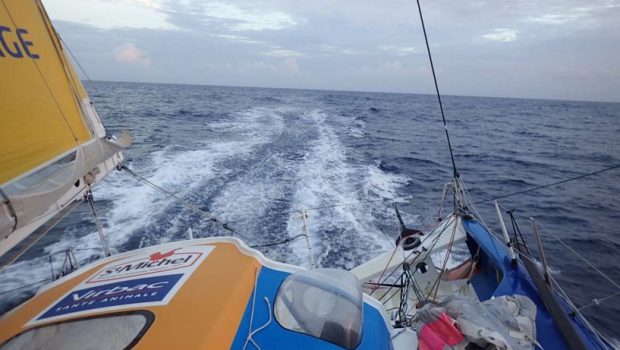
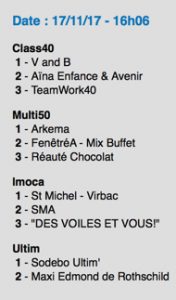

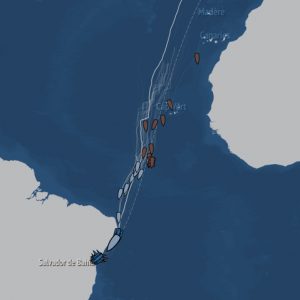
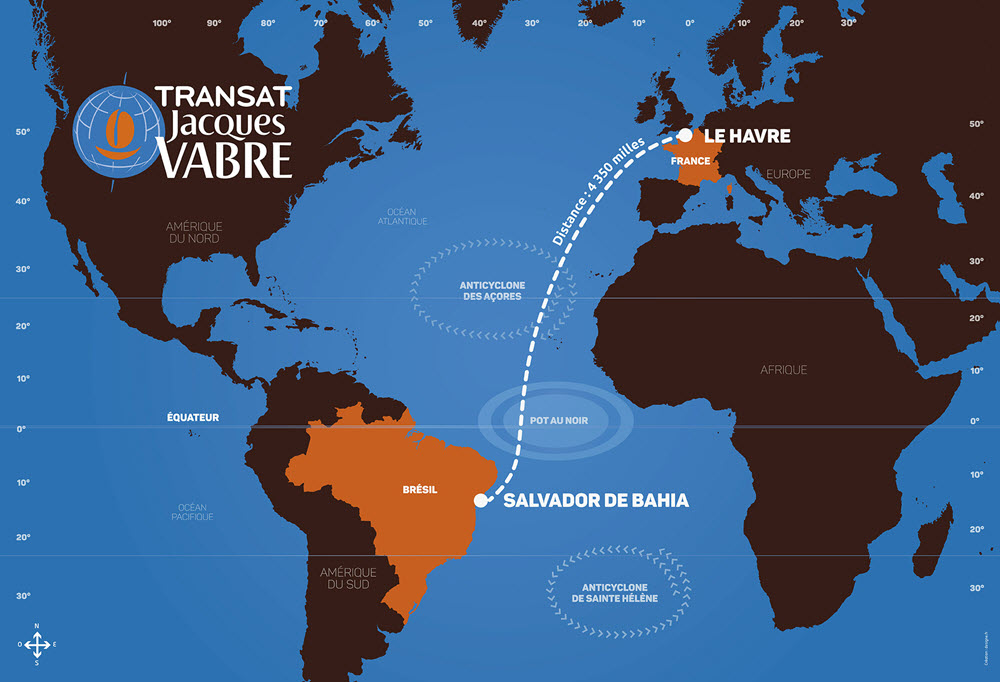

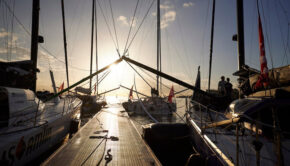
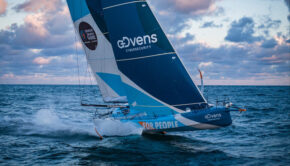
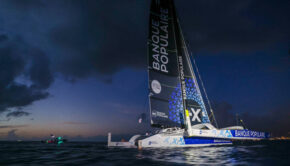
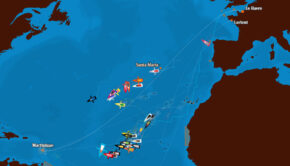
 We’ll keep your information safe.
We’ll keep your information safe.